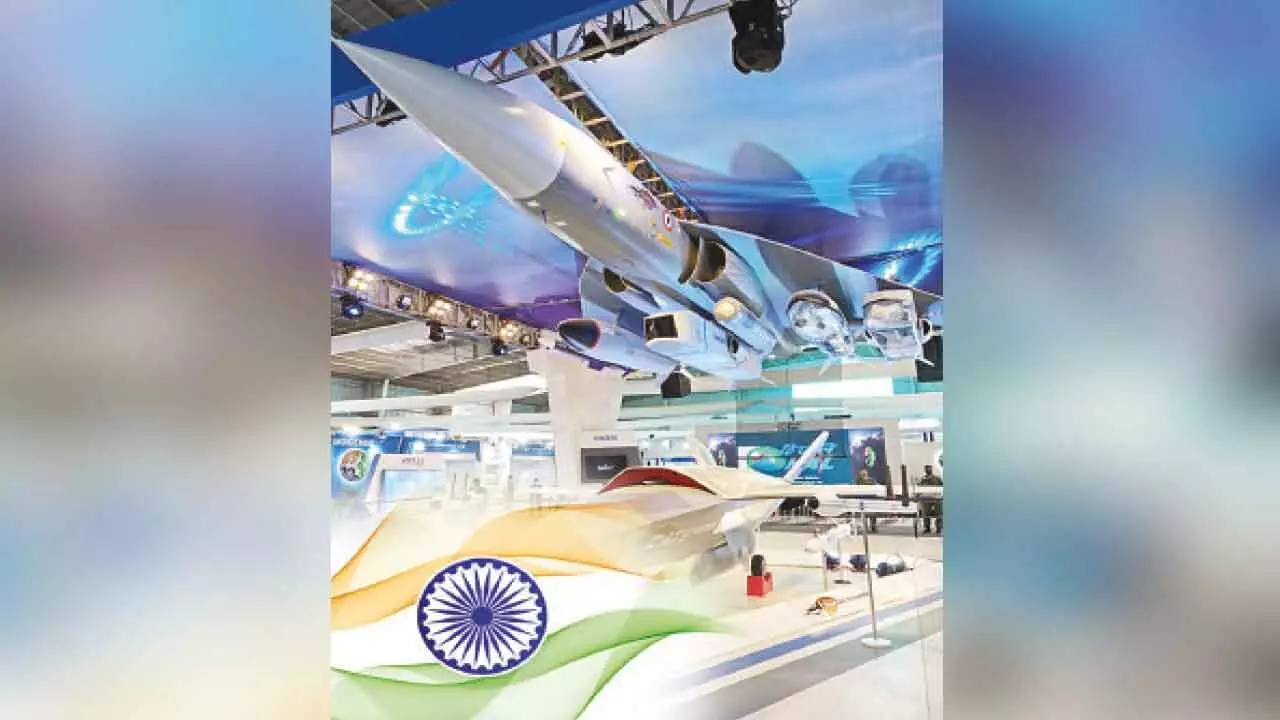International Standards To Soon Define The Indian Aerospace And Defence Market
The major drivers are favourable government policies, increase in defence budget and border disputes
International Standards To Soon Define The Indian Aerospace And Defence Market

The Indian aerospace and defence market was valued at $ 27.1 billion in 2024 and is expected to reach $ 54.4 billion by 2033 at a CAGR of 6.99 per cent during the forecast period 2024 – 2033. The aerospace and defence sector involves building aircraft, ships, spacecraft, weapon systems and defence equipment.
This sector is growing rapidly and propelling the growth of the manufacturing sector, especially defence equipment of international quality standards, and establishing technologically advanced manufacturing facilities.
Its major drivers are supportive government policies, increase in defence budget, growing border disputes and changing geopolitical situations.
Several equipment manufacturing companies have come of age as regards quality that can be comparable to the finest of global standards.
The government has launched a defence testing infrastructure scheme to boost domestic defence and aerospace manufacturing so as to set up greenfield defence testing infrastructure as a common test facility for government assistance to promote domestic defence production and bridge the gaps in order to deliver quality products. Such supportive policies are expected to create lucrative opportunities for the market during the forecast period.
Additionally, the Indian aerospace and defence market is creating significant opportunities for Indian and foreign companies across the supply and value chain. India has the third-largest armed forces in the world, and its defence budget is about 1.90 per cent of its GDP.
India is one of the largest importers of conventional defence equipment and spends about 40 per cent of its total defence budget on capital acquisitions. About 70 per cent of its defence requirements are met through imports. Thus these factors are expected to create lucrative opportunities for many global players to enter in Indian market.
The restraints come in the form of stringent regulations, counterfeiting aerospace and defence devices, lack of advanced technology, and high cost of technologies.
The Indian aerospace parts manufacturing market size was estimated at $ 13.6 billion in 2023 and is projected to grow at a CAGR of 6.8 per cent from 2024 to 2030. The market is driven by the increasing demand for air travel, both domestic and international.
As airlines expand their fleets and modernise their aircraft, the demand for high-quality aerospace components is expected to surge.
Advancements in technology such as additive manufacturing (3D printing), have revolutionised the aerospace parts manufacturing sector in India. 3D printing allows for rapid prototyping and production of complex aerospace components with reduced lead times, enabling companies to respond according to market demands. The ability to customise parts according to specific design requirements enhances overall efficiency and performance in aerospace applications. This technology contributes to cost-effectiveness by minimising material wastage and streamlining production processes. As a result, 3D printing has become a key driver of the market growth in India's aerospace parts manufacturing industry, fostering innovation and competitiveness.
The growth of maintenance, repair, and overhaul (MRO) services has significantly boosted demand for aerospace parts and components within the country. With an increasing number of aircraft being serviced and maintained domestically, there is a corresponding rise in the requirement for locally manufactured parts to support these operations. This demand is driven by factors such as the need for quick turnaround times in MRO activities, compliance with stringent aviation regulations, and the preference for cost-effective solutions.
Strategic partnerships are piloting the aerospace parts manufacturing market growth, primarily due to the access they provide to advanced technologies, international standards, and market expansion opportunities.
These collaborations empower the manufacturers to produce high-quality aerospace components while also facilitating skill development through knowledge transfer initiatives.
The industry growth stage is moderate and the pace of the market growth is accelerating. Innovation plays a crucial role in the aerospace parts manufacturing sector. The integration of Internet of Things (IoT) sensors and connectivity features into aerospace components is enhancing their functionality and performance. Smart components can provide real-time data on factors such as temperature, pressure, and structural integrity, enabling proactive maintenance and performance optimization.
The development of lightweight and high-strength composite materials, such as Carbon Fiber Reinforced Polymers (CFRP), is revolutionising aircraft design and manufacturing. These materials offer significant weight savings, fuel efficiency improvements, and durability compared to traditional metallic structures.
Aerospace parts manufacturing services have no direct substitutes. However, the evolution of technology and materials can significantly impact the demand for specific components or services within the industry. The rise in adoption of composite materials offers many advantages such as lightweight construction, improved fuel efficiency, and enhanced durability compared to traditional metallic parts.

